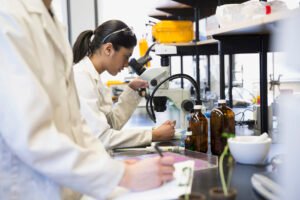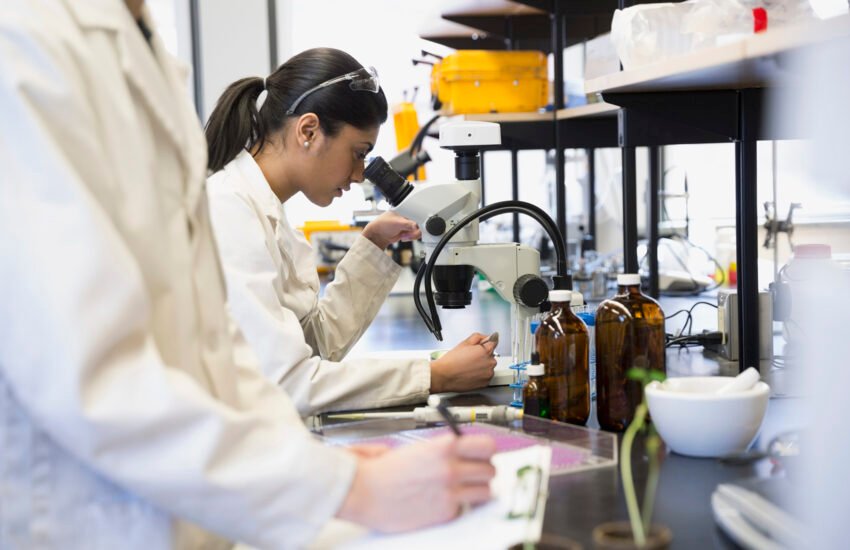The difference between pure and applied science is the basic character of scientific investigation, in which applied research concentrates on useful applications of knowledge while pure science aims to extend knowledge for its own sake. Scholars and practitioners have been fascinated for millennia by the differences between pure and applied science.
Anyone engaged in scientific research, teaching, or policy-making has to understand this difference since it affects our approach to problems, distribution of resources, and interpretation of data. Emphasizing important traits, historical viewpoints, and the ramifications for contemporary science, this article seeks to give a thorough summary of the “difference between pure and applied science explained.”

Difference Between Pure and Applied Science Explained
1. Defining Pure Science
Often known as basic or fundamental science, pure science is motivated by curiosity and the aim to increase knowledge without direct use. It is the quest of knowledge of the fundamental ideas controlling the natural environment. When fields including physics, chemistry, biology, and mathematics concentrate on investigating theoretical ideas rather than useful results, they frequently fall under pure science.
Research motivation reflects the “difference between pure and applied science explained”; pure science explores “why” and “how” inquiries, trying to explain events by thorough experimentation and observation.
In physics, for instance, study of quantum mechanics or the theory of relativity marks pure science. These ideas were developed to grasp the basic rules of the cosmos, without any first thought on their possible application in the actual world. In biology, too, the search for knowledge first motivated investigation of genetic codes or DNA structure rather than a particular useful goal. In this regard, the “difference between pure and applied science explained” is that rather than immediate utility, pure science is more focused on the search of truth and knowledge.
2. Defining Applied Science
Conversely, applied science is oriented on the useful application of scientific knowledge. It is the application of pure scientific discoveries of concepts to address practical issues. Prime instances of applied science are fields like technology, medicine, and engineering. The goals of these fields clearly show the “difference between pure and applied science explained”: applied science aims to discover solutions, enhance current procedures, and produce new technologies depending on the knowledge acquired from pure research.
Applied science governs, for example, the evolution of medical treatments and technology including MRI equipment or vaccines. These developments use the knowledge acquired from pure science—that of biological processes or electromagnetic waves—and use it to produce instruments and treatments so enhancing human health. Applied science is action-oriented, trying to generate concrete advantages and solve particular difficulties, so it differs from pure science explained here.
Read Also: 10 Universities Offering Nursing Courses in Canada Online/Distance
3. Historical Perspectives
Rooting in ancient civilizations, the “difference between pure and applied science explained” has changed with time. Early scientific efforts sometimes confused applied from pure science. For instance, the work of ancient Greek thinkers like Aristotle blended attempts to practically explain natural events with empirical research (pure science). But the difference grew increasingly clear during the 16th and 17th century Scientific Revolution.
Figures such as Galileo, Newton, and Kepler concentrated on comprehending the rules of nature at this time, therefore indicating a turn towards what we now see as pure science. Their discoveries later helped to create technologies and approaches, therefore laying the groundwork for future applied sciences from which they sprang. The 19th and 20th centuries confirmed even more the “difference between pure and applied science explained” as scientific fields grew more specialized and the industrial revolution sought practical uses of scientific discoveries.
4. Interdependence of Pure and Applied Science
Though the “difference between pure and applied science explained” emphasizes different objectives and approaches, it is crucial to understand that the two are closely related. Applied science usually derives from pure science. Development of the technology and procedures defining modern life cannot be achieved without a basic knowledge of natural laws. On the other hand, by posing fresh problems and issues demanding more research, applied science can propel pure science.
For instance, the application of science—that is, the growth of the internet—has created fresh paths for pure scientific inquiry in domains including computational biology and data science. Likewise, the application scientific discovery of penicillin resulted in a better knowledge of microbial life and the growth of fresh directions of pure science. The “difference between pure and applied science explained” is about realizing how different disciplines assist one another rather than about dividing them.
Read Also: Cost of Studying in Canada for International Students
5. Modern Implications
The “difference between pure and applied science explained” has major ramifications for public view, funding, and education in the modern society. Funding might be difficult to get since pure science sometimes calls for long-term investments with no quick pay-off. Because applied research directly helps society—new technology, medical treatments, or economic growth—governments and businesses may give it top priority. This strategy, meantime, can ignore the significance of pure research in inspiring next developments.
The difficulty of juggling pure and practical science also rests on educational institutions. Research centers and universities have to choose how best to distribute funds, create courses, and educate the following generation of researchers. These judgments are greatly shaped by the “difference between pure and applied science explained” since institutions want to equip students for professions in both research and industry.
Another area in which the “difference between pure and applied science explained” is public view of science. Because of its obvious advantages, applied science usually attracts more interest and support from the general people. Still, as pure science forms the foundation of future practical advances, society has to be taught the importance of it. Lack of knowledge of the “difference between pure and applied science explained” runs the danger of undervaluing the efforts of fundamental research.
6. Case Studies: Pure and Applied Science in Action
Review the following case studies to show even more the “difference between pure and applied science explained”:
First case study
The Discovery of electromagnetic Waves One shining example of pure science is James Clerk Maxwell’s 19th-century discovery of electromagnetic waves. Laying the foundation for the whole science of electromagnetism, Maxwell’s equations explained how electric and magnetic fields interact. His work at the time was essentially theoretical and had no immediate use. Still, this pure scientific inquiry finally produced useful scientific advances including radio, television, and wireless communication. This case study best illustrates the “difference between pure and applied science explained,” in which transforming technologies are built upon pure research.
The second case study
The Creation of Vaccines One instance of applied science is the development of vaccinations. Developing vaccines depends critically on a knowledge of how illnesses spread and how the immune system functions, acquired by pure scientific study. For example, Edward Jenner’s 18th-century smallpox vaccination work drew on prior research on infectious diseases. Still pillar of public health, this applied science has saved millions of lives. The way pure science findings are used to address urgent health concerns shows clearly the “difference between pure and applied science explained”.

Third case study
The Human Genome Program Comprising both pure and applied research, the Human Genome Project was finished in 2003. Driven by the pure scientific search to grasp human biology, the effort sought to map the whole human genome. Since then, the acquired knowledge has proven used in biotechnology, genetics, and medicine among other disciplines. The initiative shows the “difference between pure and applied science explained” as well as how they may cooperate to reach historic scientific benchmarks.
7. Challenges and Future Directions
Furthermore underlined by the “difference between pure and applied science explained” are various difficulties confronting the scientific community. The increasing need to generate results with quick practical uses presents one of main difficulties. Sometimes this results in a devaluation of pure science, which is necessary for long-term development even if it might not have immediate advantages. Furthermore difficult is persuading legislators and the public of the value of pure research since they might give applied science top priority since it directly affects society.
Looking ahead, the “difference between pure and applied science explained” will always change as new disciplines develop and multidisciplinary research gains increasing frequency. Fields include artificial intelligence, climate science, and customized medicine blur the boundaries between pure and applied research and call for a comprehensive approach that values the quest of knowledge as well as its useful applications. Understanding the “difference between pure and applied science explained” will be vital as science develops to support creativity and handle the difficult issues of the twenty-first century.
Recommended
- 7 Institutions in Canada Offering Engineering Degrees and Courses
- GMAT Exam Fees 2024: Registration, Rescheduling And Cancellation
- List of 10 Oldest Universities In The World
- Canada Scholarships for International Students
Conclusion
The “difference between pure and applied science explained” is not only a theoretical one; it affects our approach to scientific research, resource allocation, and handling of worldwide issues. Pure science broadens our knowledge of the cosmos and is the basis upon which practical science develops answers to current issues. The progress of knowledge and the improvement of society depend on both as well. Appreciating the “difference between pure and applied science explained,” helps us to negotiate the complexity of current science and guarantee a fair approach to discovery and invention.
SEE ALSO:
Trust you found our article on Pure and Applied Science Explained helpful. Follow our website for more interesting articles.

